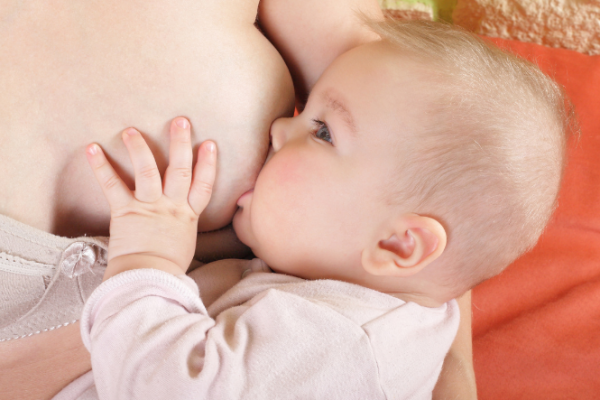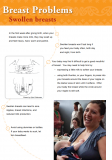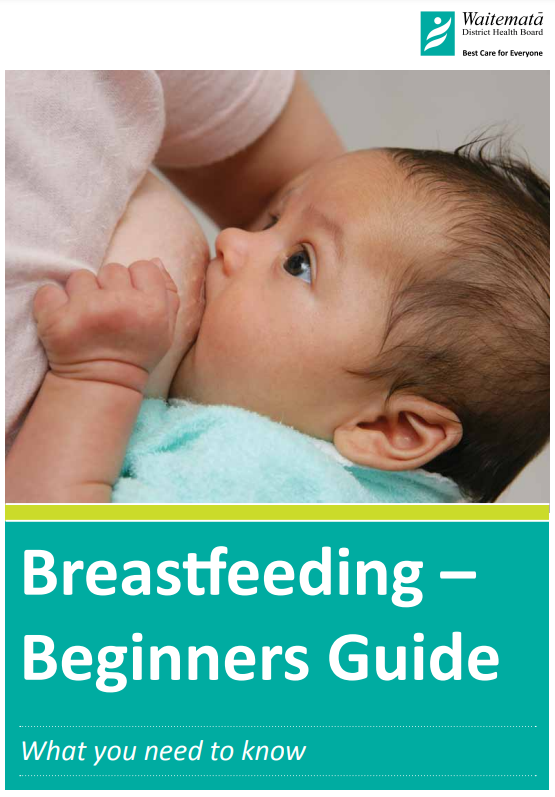Wishing everyone a safe and happy Christmas and New Year – Meri Kirihimete from the Healthify team.
Common breastfeeding problems
Key points about common breastfeeding problems
- Breastfeeding can be a great experience, but there are often challenges and unexpected speed bumps along the way.
- It's great to reach out early if a feeding journey isn't going according to plan.
- Here are 10 common breastfeeding problems and tips to help solve them.

A few days after the birth, your milk supply comes in. For some people this happens very quickly, often overnight, and your breasts may become swollen, hard, hot and painful. This usually lasts less than 24 hours.
What can you do about engorged breasts?
Feeding your baby frequently on demand can help relieve the discomfort of engorged breasts. It's usual to feed at least 10 times over 24 hours at this stage. Don't try to space feeds or limit your baby's time at the breast.
If your baby has difficulty latching on because your breasts are so engorged, try expressing a little excess milk by hand to relieve a little pressure.
Read more and watch a video about hand expressing milk.(external link)
A technique called ‘reverse pressure softening’ can also help. This involves applying gentle but firm pressure on either side of the areola (the ring of coloured skin around the nipple) using the finger and thumb and pressing towards the chest wall. Keep the pressure constant for up to 60 seconds – the swelling will feel like it is shifting backwards, making it easier for baby to latch on.
Cool compresses for 20 minutes after or between feeds can provide relief.
Cabbage leaves are an old fashioned remedy for engorgement. Care must be taken as cabbage leaves can reduce milk production. Apply clean cooled green cabbage leaves for up to 20 minutes a maximum of 3 times per day. Once symptoms or engorgement have improved, you should stop using cabbage leaves.
Avoid
- Applying heat.
- Massaging or stimulating the breast.
Red flags
Contact your doctor or lead maternity carer (LMC) immediately if:
- you have a fever, or feel shivery/significantly unwell
- your breast is red and tender
- your baby isn’t feeding well or is sleepy
- you have concerns regarding your baby or yourself
- symptoms or engorgement are not improving after 24 hours.
If you experience nipple pain or discomfort it's important to reach out for advice from your lead maternity carer, lactation expert or trained breastfeeding support worker. Breastfeeding is not meant to be painful. It's very difficult to establish a healthy breastfeeding pattern if you are in pain. Ask for help as soon as possible rather than waiting as nipple damage could occur if your technique isn't right.
What can I do about latching pain?
When a baby is well ‘latched’ the nipple and the areola (area of darker skin around the nipple) are in the baby's mouth. Getting a good fit and hold is like choreographing a delicate dance between partners. Before your baby latches on, their mouth should be open wide, their chin pressed into your breast and head tipped back so their nose is away from the breast. When your baby is correctly positioned, you shouldn’t see your baby's lips, your nipple or the lower areola. Your baby's face should ideally be ‘buried’ in your breast with their nose free to breathe.  Image credit: Canva
Image credit: Canva
You can try using gentle micro-movements to adjust your position or baby’s position, listen to your body and what feels comfortable. Micro-movements may lead to a more comfortable fit and hold. You can try:
- reclining (leaning back) more
- gently shuffling your baby’s body towards the other breast
- gently moving your baby down your body.
Movements should be slow and gentle – experiment.
If you need to remove your baby from your breast to adjust positioning, take care to release the suction by gently sliding your finger between their mouth and your breast. Pulling them off your breast when they are enthusiastically sucking can be very painful and damage your nipple.
If breastfeeding still hurts, get an expert to watch you feed so they can help you and your baby.
Watch a video about getting a good latch.(external link)
Not all women experience sore or cracked nipples; however, if you do, it may really test how much you want to breastfeed. Sore nipples are most common about 3–7 days into breastfeeding. At times you will feel that it's not worth it, and that breastfeeding is just not for you. It's very difficult to establish a healthy, breastfeeding pattern if you are in pain, so ask for help as soon as possible.
What can I do about sore or cracked nipples?
If you have sore or cracked nipples, seek help from your midwife or a lactation consultant. Sore and cracked nipples can be the result of many different things including latching problems, sensitive skin, a tongue-tied baby or inverted nipples. You may need help to work out what is causing yours.
Your midwife or lactation consultant will help you position or latch your baby to the breast correctly. In most cases, once the baby is correctly positioned the nipple heals in 2 or 3 days.
If one nipple is more sore than the other, start feeding on the less painful side so that your baby does not feed furiously on the sore breast. Some women find that feeding from one breast per feed (rather than both) allows them to rest the nipple for a longer time and helps with healing.
Try expressing a little milk first before breastfeeding. This will soften and lubricate the nipple. Don't use creams or drying agents on your nipples. Check with your healthcare provider if your nipples aren't healing.
Paracetamol is considered safe to take for the pain. If you're reluctant to take pain relief, talk with your doctor or midwife.
Plugging of ducts is caused by milk glands not emptying due to localised swelling or narrowing of milk ducts limiting drainage. It can cause pain, redness and hard lumps over an area of your breast. Unless the pressure is relieved, blocked ducts can lead to mastitis.
What can I do about plugging?
To reduce plugging of milk ducts, it's important to feed your baby frequently on demand.
New research and guidelines suggest it's important to avoid pressing or massaging the breast tissue as this can cause microtrauma to the breast tissue, making the plugging worse. This may be different from previous guidelines or advice in the community.
Simple measures should be tried first. These include:
- adjusting positioning and improving latch/fit and hold
- feeding your baby on demand
- minimising pumping/let down devices
- cool compresses
- simple pain relief.
If your symptoms don't improve after 24 hours or are getting worse at any stage you should seek advice.
It's important that you have a bra that isn’t too tight and offers good support without constricting the breast tissue, allowing for expansion when your milk supply comes in.
Mastitis is inflammation of the breast that happens when pressure builds within the milk cells from stagnant or excess milk. Sometimes this may be accompanied by a bacterial infection. Typical symptoms are tender hot swollen area of breast, fever, chills, headache, muscle aches and flu-like symptoms. Mastitis affects approximately 1 in 5 women, most commonly in the first 4 weeks of breastfeeding.
What can I do about mastitis?
Continue to breastfeed your baby, starting with the sore breast. Though it may be painful, emptying the breast is essential to help clear the blockage and relieve pressure. It's quite safe to feed your baby from the affected breast.
Treat mastitis in a similar way you might treat a sprained ankle. Rest as much as you can and drink plenty of fluids. Paracetamol and ibuprofen are considered safe to take for pain and inflammation. A cool compress may give relief.
If the pain and redness in your breast haven't gone in 24 hours or you feel ‘fluey’, notify your midwife or see your healthcare provider – you may need antibiotics.
Mastitis may be a sign that latch/fit and hold may need adjusting. Touching base with a lactation expert is advised. Read more about mastitis.
Thrush is a yeast (fungal) infection that can cause sore, itchy or cracked nipples. There may be pain, like sharp needles going deep into your breast, which isn't relieved by improving the way your baby latches on. Thrush can also affect your baby. You may notice that they start fussing at or pulling off your breast. There may be some redness or white spots like patches of cottage cheese when you look inside their mouth. If your baby has oral thrush, there's a chance they may also develop a yeast infection on their bottom.
What can I do about thrush?
Thrush is easily treated with antifungal medication from your midwife or doctor. Breast and nipple thrush is treated with antifungal medicine and antifungal nipple gel/creams. Thrush in your baby’s mouth is treated using an oral gel or drops; an antifungal cream is used for their bottom.
You should continue breastfeeding.
Read more about thrush.
You can tell if you have inverted or flat nipples by doing a simple squeeze test. Gently grab your areola with your thumb and index finger – if your nipple goes in rather than out it is a sign of an inverted nipple.
What can I do about inverted or flat nipples?
The first thing to remember is that babies breast-feed, not nipple-feed. It is very rare for people to be unable to feed because of an inverted nipple.
Nipples often begin to protrude more in pregnancy and once your baby has started breastfeeding on a regular basis, the nipple shape shouldn’t affect the latch.
If you're concerned, seek advice from your healthcare provider, midwife or lactation expert. Silicone nipple shields may help with latching as long as your milk supply has been established. It's important for a professional to help assess whether shields will be useful or not.
Tongue-tie is when the skin between the underside of the tongue and the floor of the baby's mouth is shorter than usual. It affects about 4–11% of newborn babies. Some babies who have tongue-tie don't seem to be bothered by it. In others, it can restrict the tongue's movement, making it harder to breastfeed.
What can I do about tongue-tie?
Tongue-tie is sometimes diagnosed during a baby's routine newborn check, but it's not always easy to spot. It may not become clear until your baby has problems feeding.
Talk to your midwife, lactation consultant or healthcare provider if you're concerned about your baby's feeding and think they may have tongue-tie.
Read more about tongue-tie.
A common reason people give up breastfeeding is because they feel like they don’t have enough milk. Their baby may be feeding very frequently but never seem satisfied. In most cases, the baby is getting all the milk they need.
What can I do if I am concerned about my milk supply?
It's normal for babies to feed frequently (cluster feeding) in the first few weeks, especially in the evening. They also breastfeed more often when they’re going through a growth spurt. Sometimes they are fussy and unsettled, but that’s just because they are new babies and going through normal unsettled periods.
At about 6–10 weeks, your breasts tend to settle down and feel ‘soft’. Many mothers often worry their milk supply is drying up. In fact, it usually means your milk supply and your baby’s needs are completely in sync, and that you're making exactly the right amount of milk for your baby’s needs.
Your milk supply should be enough as long as your baby is:
- putting on weight
- alert
- having plenty of wet and dirty nappies
- sleeping well between feeds.
True low milk supply is rare but if you have concerns, check with your healthcare provider.
If your milk supply does need a boost, try feeding your baby more often for a couple of days. The more often breast milk is removed from the breast, the more milk will be produced. Expressing after feeds may also help to boost your milk supply. Offer lots of skin-to-skin cuddles (this will boost your breastfeeding hormones), rest, drink plenty of fluids and eat healthy foods. Look after yourself and reach out for help from local supports.
It’s common for babies to be sleepy during the first few weeks and months of life, so falling asleep during feeding is common.
What can I do if my baby is too sleepy to feed?
To keep your baby nursing actively, try compressing your breast firmly in one hand between your thumb and fingers while your baby feeds. This will increase milk flow and encourage your baby to take more milk. When you notice your baby’s sucking slowing down and their eyes closing, gently remove them from your breast. Try to stimulate them by gently walking your fingers up and down their spine, before returning them to the breast.
You can also try rubbing your baby’s hand, to help stimulate a reflex that connects the mouth and hand (you may notice your baby opening and closing their hand as they suck). You can also try gently stroking under their chin to encourage sucking.
As your baby gets older they will be able to stay awake longer, so don’t worry too much.
Breastfeeding should be an enjoyable time for both you and your baby. Breast milk is tailormade for your baby – offering nutrients and important protective properties. If you're having problems, ask for support from your midwife or lactation consultant.
- You can phone Plunketline on 0800 933 922(external link) anytime day or night for advice about breastfeeding
- You can also talk to your midwife, doctor or Plunket nurse
- Te Rito Ora(external link) is a free community-based service that provides breastfeeding and baby feeding information and support for all mothers and babies who live in South Auckland
- Other groups to contact include La Leche League(external link)
- Online support(external link) Breastfeeding NZ
The following doctors practise breastfeeding medicine and are available for online or face‑to‑face consultations:
- Dr Yvonne LeFort, Auckland [email protected]
- Dr Katie Fourie, Hamilton [email protected]
- Dr Whitney Davis, Tauranga [email protected]
- Dr Heather Johnston, Palmerston North [email protected]
- Dr Danuta Amelung, Lower Hutt [email protected]
- Dr Sophie-Lee Mace, Nelson/Tasman [email protected]
Breastfeeding (wide range of resources)(external link) Health New Zealand | Te Whatu Ora
Common breastfeeding concerns(external link) Kellymom, US
Engorgement help – reverse pressure softening(external link) Kellymom, US
Breastfeeding – caring for and nurturing a pēpi(external link) Oranga Tamariki, NZ
Apps
Women's health apps
Breastfeeding apps
Resources
Breast problems – swollen breasts La Leche League and Ministry of Health, NZ, 2018 English(external link), Māori, (external link)Samoan(external link), Tongan, (external link)Niuean(external link)
Breast problems - sore breasts La Leche League and Ministry of Health, NZ, 2012 English(external link), Māori(external link), Samoan(external link), Tongan(external link), Niuean(external link)
Breastfeeding – beginners guide Auckland DHB and Waitematā DHB, NZ, 2021 English, [PDF, 889 KB]Chinese [PDF, 1.1 MB], Thai [PDF, 685 KB]
Benign breast conditions – breast cysts (external link)Health Ed, NZ, 2016
Benign breast conditions – breast calcifications(external link) HealthEd, NZ, 2022
References
- Douglas P. Hey baby! Why can’t I massage out my blocked milk ducts or mastitis?(external link) Medical Republic, Australia, 2021
Credits: Healthify editorial team. Healthify is brought to you by Health Navigator Charitable Trust.
Reviewed by: Health Navigator Clinical Advisors
Last reviewed:
Page last updated:







